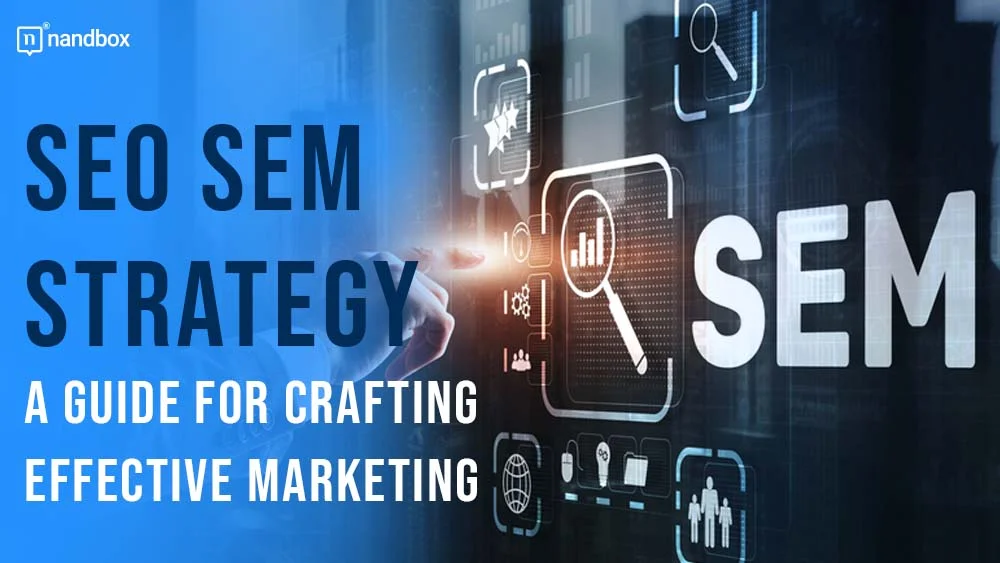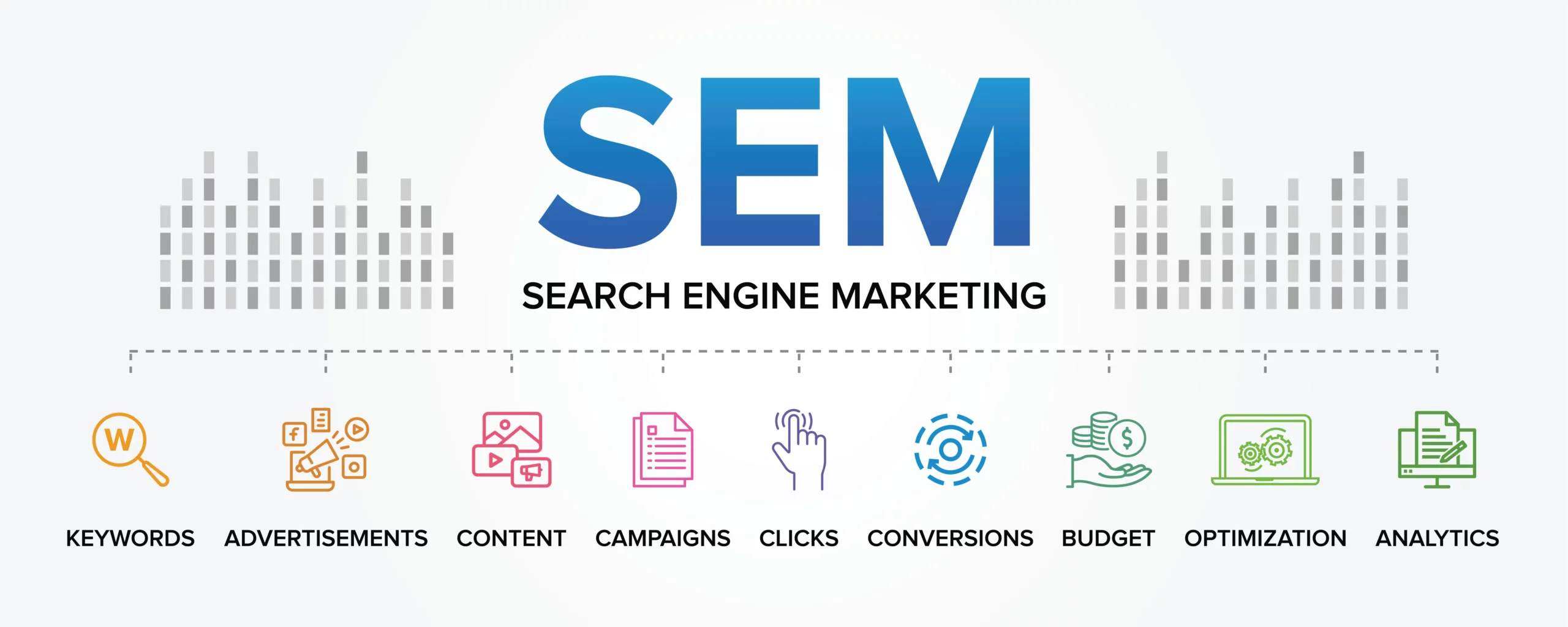Do you want to grow your business and attract more customers? Search Engine Marketing (SEM) can help you achieve those goals. It’s a powerful tool that puts your business in front of people who are actively searching for what you offer. When done right, an SEO SEM strategy can drive significant traffic to your website, generate leads, and boost sales. If you want to make the most out of it but don’t know where to start, read the guide below.
Crafting an Effective SEO SEM strategy: Understand Your Audience
Before you research keywords, create ad copy, and consider solutions like paid advertising, your first step is to know your customers. To help you identify them, consider the following questions:
Who Are They?
Define your ideal customer based on demographics, interests, behaviors, and goals. Consider factors like age, gender, location, income, occupation, and hobbies.
What Do They Want?
Understand their needs, desires, pain points, and challenges. What problems are they trying to solve? What goals are they trying to achieve?
Where Do They Hang Out Online?
Identify the platforms and websites they frequent. Which social media channels do they use? What kind of content do they consume?
Once you answer these questions, create detailed customer personas to represent your target audience. This will help you effectively tailor your messaging and campaigns.
Conduct Thorough Keyword Research
Keywords are the foundation of any SEO SEM strategy. They’re the words and phrases people use to find what they need. Start by brainstorming relevant keywords for your business. Then, use keyword research tools to uncover popular terms and phrases. Don’t just focus on high-volume keywords. Long-tail keywords, which are more specific, often have lower competition and higher conversion rates.
Create Compelling Ad Copy
Your ad copy is your first impression. Make it count. Write clear, concise, and compelling ad copy that highlights your unique selling proposition. Use strong calls to action to encourage clicks. Test different ad variations to see what works best.
Build High-Quality Landing Pages
Your landing page is your chance to convert visitors into customers. After clicking your ad, visitors land on a specific page.
Your landing page design should be relevant to the ad and offer immediate value to the visitor. Keep it focused and easy to navigate. Highlight the key benefits of your product or service and make it clear how visitors can take the next step.
Set a Realistic Budget
How much can you afford to spend on SEM? Determine your budget before launching your campaign. Consider factors like your marketing goals, target audience, competition, and average customer value. This will help you allocate your resources effectively.
There are different bidding strategies available:
Manual Cost Per Click (CPC)
You set your maximum bid for each keyword. This gives you complete control over your spending, but it can be time-consuming to manage.
Enhanced CPC
Ad platforms may adjust your bids based on the likelihood of a conversion. This can help you get more clicks and conversions. However, you might pay more per click.
Target Cost Per Acquisition (CPA)
You set a target cost per acquisition. Your ad platform proactively regulates your bids to achieve your target. This can help you get more conversions for a specific cost, but it may limit your reach.
Choose a bidding strategy that aligns with your goals and budget. Remember, SEM is an investment, not a cost. By carefully considering your budget and bidding strategy, you can maximize your return on investment.
Leverage Remarketing
Remarketing is a powerful tool to reconnect with potential customers. It allows you to show ads to people who have visited your website but didn’t convert. Here’s how remarketing works:
Installation of the Remarketing Tag
A remarketing tag is placed on your website to collect data on visitor behavior, including pages viewed and actions taken.
Audience Creation
You create specific audience segments based on visitor behavior. For example, you might create an audience of people who visited your product page but didn’t make a purchase.
Ad Creation
You develop targeted ads tailored to each audience segment. These ads should highlight relevant products or offers and encourage a desired action.
Ad Delivery
Google’s ad network displays your ads to users within the selected audience as they browse other websites and apps.
Partnering with an SEO agency like Atroops Digital can further refine your remarketing strategy to maximize results.
Measure Your Success
You can’t improve what you don’t measure. Tracking your search engine marketing campaigns using A/B testing and other methods is essential. Doing so helps you understand their performance and make informed decisions. By monitoring the following key metrics and comparing your results to industry benchmarks, you can identify strengths, weaknesses, and opportunities for improvement:
Click-Through Rate (CTR)
It measures how often people click on your ad after seeing it. A high CTR indicates that your ad is relevant and compelling.
Conversion Rate
This calculates the percentage of people who take a desired action after clicking your ad, such as making a purchase or filling out a form. A high conversion rate means your landing pages are effective at converting visitors into customers.
Return on Investment (ROI)
This evaluates the profitability of your SEM campaign. To determine your ROI, calculate the total revenue generated from your campaigns and subtract the total cost.
Average Order Value (AOV)
It determines the average amount customers spend per order. By increasing your AOV, you can improve the overall profitability of your SEM campaigns.
Analyze your metrics regularly to identify trends and patterns. Use this information to optimize your campaigns by adjusting bids, keywords, ad copy, and landing pages. If possible, experiment with different approaches to find what works best for your audience.
Keep Up With Industry Trends
The digital marketing is always changing. What works today might not work tomorrow because of regular updates on search engine algorithms. That’s why it’s crucial to stay up-to-date with the latest trends and best practices. Follow industry blogs, attend webinars, and participate in online forums to keep your finger on the pulse of the industry.
Conclusion
Crafting an effective SEO SEM strategy takes time and effort. But when done right, it can deliver impressive results. By understanding your audience, conducting thorough keyword research, creating compelling ad copy, and continuously optimizing your campaigns, you can drive traffic, leads, and sales for your business.





